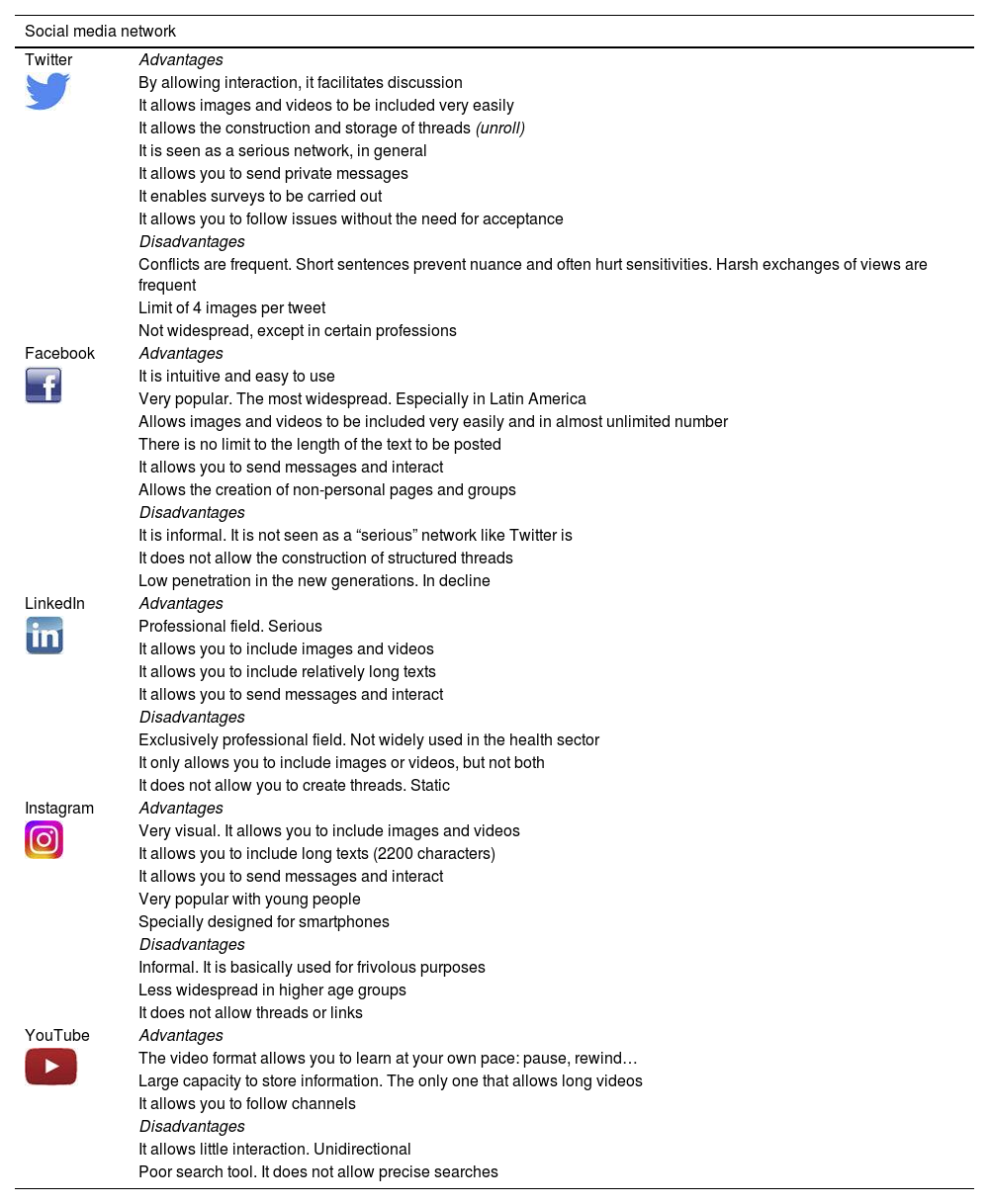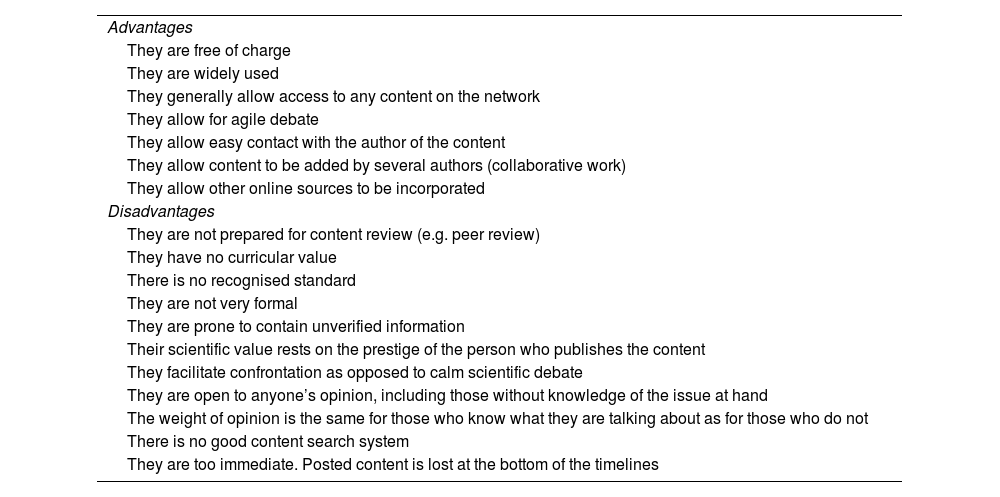The universally accepted system for the transmission of scientific knowledge in the field of medicine has long been grounded in scientific publications. Social networks can be a useful alternative or complementary method of transmitting this knowledge.
Social networks (e.g., Twitter, Instagram, Facebook, LinkedIn, YouTube, and TikTok) generate educational contents that enable quality training, despite their informality. Each of these networks has strengths and weaknesses that users should know about.
These platforms are free and allow for real-time discussion. They make it easy to incorporate content and to contact experts or access sources of knowledge directly. Aware of their influence, publishers have incorporated metrics to measure the impact of their articles in social networks (Altmetrics).
These networks should be incorporated into departmental training programs immediately. Nevertheless, navigating through social networks is complex, and the hashtag-based system of searching is inefficient, limiting their use in education.
Despite the informality of the knowledge generated on social networks, the importance of these networks as a source of knowledge is growing. Radiology departments must design a strategy for using social networks for education rather than for propaganda, creating well-organized focal groups that search for contents through systematic, filtered review of information, digital repositories, and review sessions and for sharing this knowledge both inside and outside the department. Departments must also implement a strategy for communicating through these networks.
El sistema universalmente aceptado para la transmisión del conocimiento científico en medicina se basa desde hace mucho en las publicaciones científicas. Las redes sociales (RRSS) son una alternativa o complemento que puede ser útil.
Las RRSS (Twitter, Instagram, Facebook, LinkedIn, YouTube, TikTok) tienen generadores de contenidos educativos que pueden proporcionar formación de calidad, a pesar de su informalidad. Cada una tiene sus puntos fuertes y sus debilidades, que conviene conocer.
Son gratuitas y permiten discutir en vivo, incorporar contenidos ágilmente y contactar directamente con expertos o fuentes de conocimiento. Las editoriales son conscientes de su influencia y han incorporado métricas que miden el impacto en ellas de los artículos (Altmetrics).
La estrategia formativa de cualquier servicio debe incorporarlas ya. Sin embargo, navegar en ellas es complejo y el sistema de búsqueda, basado en hashtags, es ineficiente, por lo que su uso en educación sigue siendo cosa de excéntricos.
El conocimiento generado en las RRSS, a pesar de su informalidad, es una fuente cada vez más importante de conocimiento. Los servicios de radiología deben definir una estrategia de RRSS, no con fines de propaganda, sino educativos, creando grupos focales bien formados que busquen contenidos mediante revisión sistemática y filtros, repositorios digitales y sesiones de revisión y los compartan dentro y fuera del servicio. Igualmente, debe ser implementada una estrategia de comunicación a través de redes.















